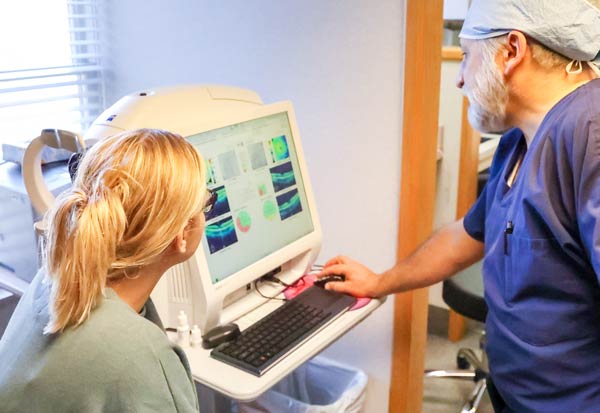What Is Diabetic Retinopathy?
 Diabetic retinopathy is a complication of diabetes that affects the eyes. The length of time a person has diabetes determines his or her likelihood of developing diabetic retinopathy. It is the most common diabetic eye complication and a leading cause of blindness in American adults. Diabetic retinopathy causes the blood vessels that supply nourishment to the retina, the light-sensitive lining in the back of the eye where vision is focused, to weaken, swell and leak, causing a loss of vision.
Diabetic retinopathy is a complication of diabetes that affects the eyes. The length of time a person has diabetes determines his or her likelihood of developing diabetic retinopathy. It is the most common diabetic eye complication and a leading cause of blindness in American adults. Diabetic retinopathy causes the blood vessels that supply nourishment to the retina, the light-sensitive lining in the back of the eye where vision is focused, to weaken, swell and leak, causing a loss of vision.
Stages Of Diabetic Retinopathy
Diabetic retinopathy has four stages, each one increasingly serious:
- Mild nonproliferative retinopathy
- Moderate nonproliferative retinopathy
- Severe nonproliferative retinopathy
- Proliferative retinopathy
As the disorder worsens, more and more blood vessels are affected. By the time a patient has proliferative retinopathy, the body is creating new blood vessels to replace the ones that are blocked. The problem is that the new blood vessels have very thin walls. If they leak blood, severe vision loss or blindness can result.
What Are The Symptoms Of Diabetic Retinopathy
In the early stages of diabetic retinopathy, patients usually do not show symptoms, and treatment is not always required. Patients have to monitor their blood-sugar levels to prevent the condition from worsening. If it does, prompt treatment is necessary to preserve vision. In its earliest stages, the condition causes tiny areas of swelling in the small blood vessels of the retina. Once symptoms are present, they include the following:
- Blurred or double vision
- Seeing flashing lights, blank spots, or dark floaters
- Pain or pressure in either or both eyes
- Problems with peripheral vision
In advanced stages, diabetic retinopathy can cause irreversible blindness.